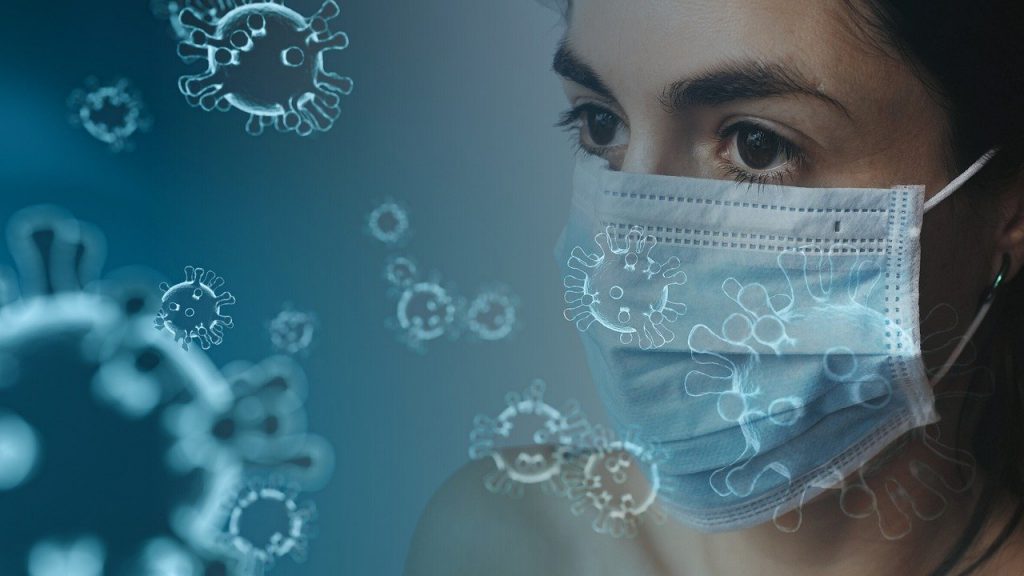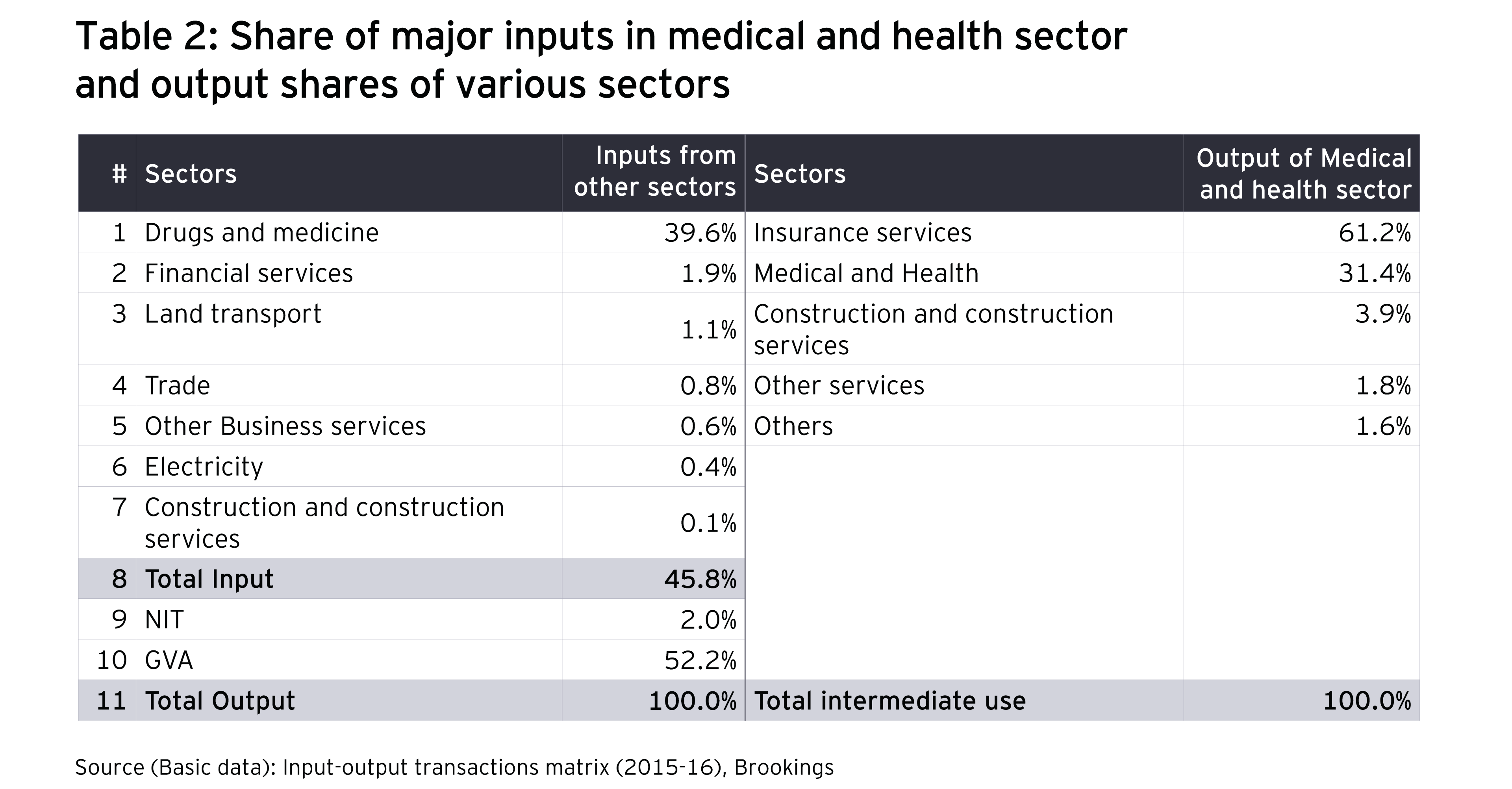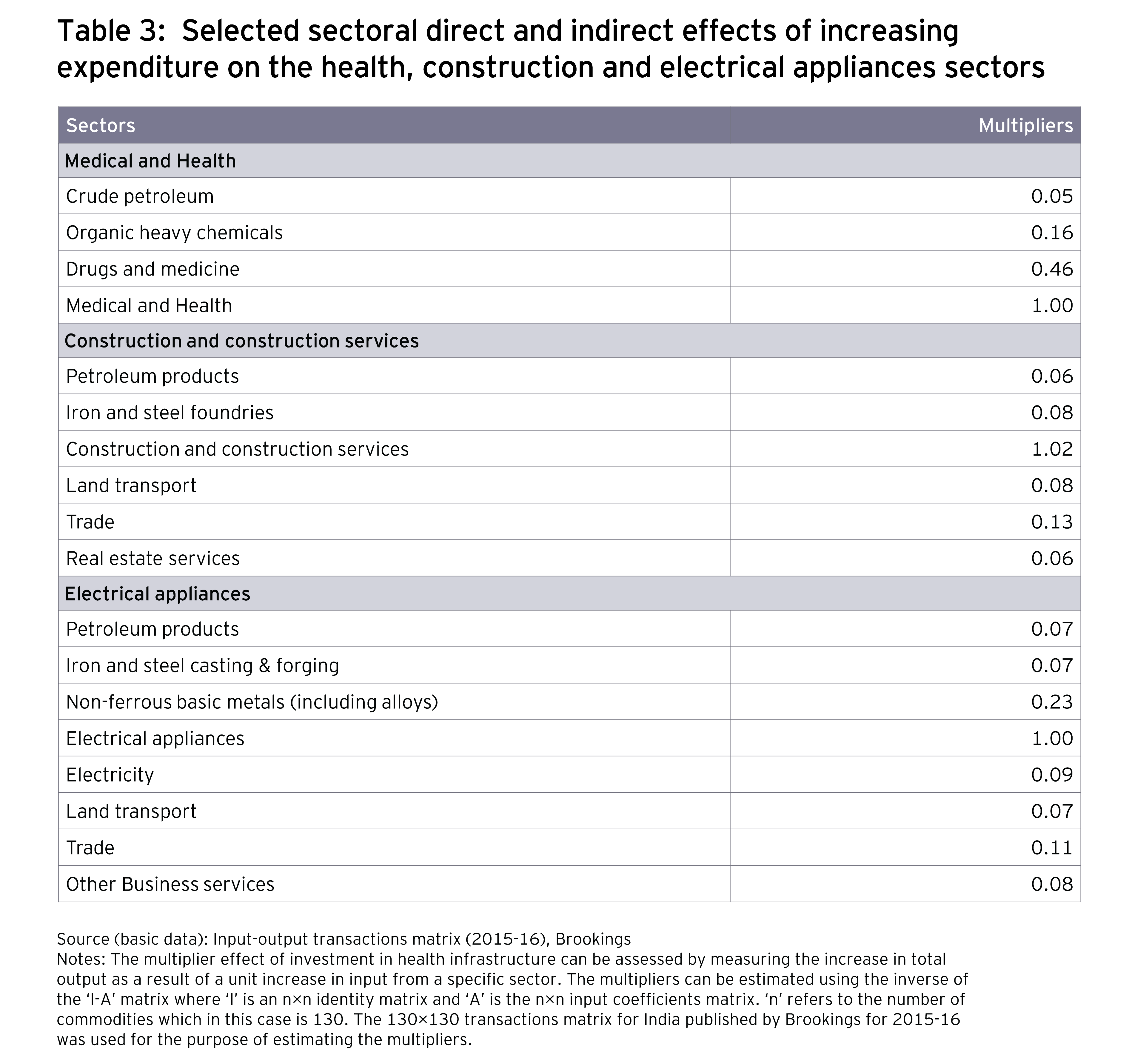The primary focus of the fiscal stimulus should be on the health sector.

Lockdown impact on Indian economy
Successive lockdowns due to COVID-19 in major cities in India have led to depressed supply and demand conditions. These lockdowns affected the supply due to the disruption of economic activities, rendering many contact-intensive sectors operate at subdued levels, causing substantial unemployment. Since this unemployment in urban and semi-urban areas has also led to depressed incomes, this has adversely affected the demand side too. Simultaneous occurrence of supply and demand disruption is a typical economic outcome of a pandemic. However, as compared to the first wave, COVID’s second wave resulted in decentralized lockdowns affecting different areas in different ways. The disruption in the overall economic growth may therefore be limited in terms of its geographical spread and its distribution over time during the financial year.
The month of April 2021 showed positive momentum largely because of a substantive base effect. However, the second wave showed its adverse impact in the month of May 2021. In order to support India’s growth performance, a strong policy support particularly fiscal is needed in the remaining three quarters of the fiscal year. The primary focus of the fiscal stimulus package should be on the health sector. This could ensure meeting the short-term healthcare demand arising from COVID’s second wave and a possible third wave besides supporting growth and employment in the economy.
Impact of COVID’s second wave on the Indian economy
High frequency indicators indicate that after gathering substantive momentum in the months of March and most of April 2021, the Indian economy showed signs of slowing down in May 2021 due to the impact of COVID’s second wave. PMI manufacturing and PMI services fell from 55.5 and 54.0 in April 2021 to 50.8 and 46.4 respectively in May 2021. Gross GST revenues in May 2021 fell to INR1.02 lakh crore from its peak of INR1.41 lakh crore in April 2021. Number of e-way bills generated fell from a peak of 7.1 crore in March 2021 to 5.8 crore in April 2021 and further to 3.8 crore in May 2021. Bank credit posted a low growth of 5.7% (y-o-y) in the week ended 04 June 2021. CPI inflation crossed RBI’s 6% upper tolerance limit, increasing to 6.3% in May 2021 from 4.2% in April 2021. WPI inflation reached an all-time high of 12.9% in May 2021 under the 2011-12 series.
In view of the impact of COVID’s second wave on the Indian economy, most domestic and international institutions and agencies have started revising their earlier FY22 GDP growth forecasts for India. Thus, the RBI has revised downwards its forecast for FY22 real GDP growth to 9.5% from its earlier forecast of 10.5% (April 2021). The World Bank has reassessed India’s GDP growth forecast to 8.3% from its earlier projection of 11.2% (January 2021). Many rating agencies have lowered their forecasts for India’s FY22 growth. Their current assessments vary from 7.6% (Moody’s[1]), 7.9% (SBI), 8.5% (Societe Generale) and 8- 9.5% (ICRA). In this context, an important benchmark is 7.8%. If India achieves at least this real GDP growth rate, it will ensure that the level of real GDP in FY22 is not lower than that of FY20 at INR145.7 lakh crore. India’s growth prospects largely depend on the discontinuation of lockdowns within the first quarter of FY22 following the COVID’s surge since April 2021. Secondly, strong policy support, particularly fiscal, is needed to uplift India’s growth performance in the remaining three quarters. For this purpose, two important considerations relate to the health sector. First, the pace and coverage of vaccination and second, expansion of health sector infrastructure. Additionally, an income support programme is needed for the vulnerable sections, both in the rural and urban areas to supplement the already announced extension of Pradhan Mantri Garib Kalyan Anna Yojana.
Strategizing stimulus: targeted fiscal intervention
Available fiscal space may be considered in relation to Center’s provisional actuals (Controller General of Accounts – CGA) for FY21 and the budget estimates (BE) for FY22. CGA’s data for FY21 indicate Center’s gross tax revenue (GTR) at INR20.2 lakh crore and net tax revenue at INR14.2 lakh crore. The likely growth in GTR for FY22 may be derived by applying a buoyancy of 0.9, which is the average buoyancy for five years before the COVID year of FY21, to the estimated nominal GDP growth of 13.9%. This nominal growth is based on assuming a real GDP growth of 9% and an implicit price deflator-based inflation of 4.5%. This gives a GTR growth of 12.5% in FY22. Applying this on the GTR base, the projected gross and net tax revenue would be INR22.8 lakh crore and INR15.9 lakh crore respectively. This implies some additional net tax revenues to the Center amounting to INR0.43 lakh crore as compared to the budgeted magnitude. The main expected shortfall may be in non-tax revenues and non-debt capital receipts. According to CGA, their FY21 levels were respectively at INR2.1 lakh crore and INR0.57 lakh crore. Applying a growth rate of 15.0% on these, which is close to the average growth rate during the five years preceding the COVID year of FY21, a shortfall in FY22 to the tune of INR1.3 lakh crore may arise. This is likely to be primarily due to the shortfall in non-debt capital receipts. For non-tax revenues, the shortfall in the budget estimates may be limited in view of RBI’s recently announced dividend of INR0.99 lakh crore[2] to the central government for the current year. In any case, the large budgeted growth of 304% in non-debt capital receipts for FY22 seems quite unlikely in view of the challenges posed by COVID’s second wave. Together, the overall shortfall in total non-debt receipts may be limited to about INR0.8 lakh crore, that is 0.4% of estimated nominal GDP.
Fiscal stimulus package for supporting growth may focus on the following three priorities: (a) income support measures for the vulnerable rural and urban populations, (b) additional vaccination expenditure in view of the Center’s recent commitment for financing 75% of India’s total vaccine procurement and (c) additional capital expenditure directed mainly towards expanding health sector infrastructure. The additional support for these three priorities may respectively be kept at INR1.0 lakh crore for (a), INR0.35 lakh crore for (b) and at INR1.0 lakh crore for (c) in view of the limited fiscal space. Together, these add to INR2.35 lakh crore of which around INR0.65 lakh crore can be accessed by restructuring of budgeted expenditure on other heads leaving a balance of INR1.7 lakh crore which would constitute an additionality of 0.8% points of GDP on the budgeted fiscal deficit of 6.7% of estimated GDP. Thus, the fiscal deficit would need to be increased to 7.9% of GDP in FY22 so as to cover the revenue shortfall of 0.4% points and the expenditure additionality of 0.8% points of GDP.
Focusing stimulus on India’s health sector: rewarding cross-sectoral interlinkages
India’s health sector encompassing its infrastructure and services has remained chronically under-invested and under-prioritized. Under-investment pertains to government capital expenditures while under-prioritization refers to government revenue expenditures on health. The combined health expenditure of central and state governments has languished at about 1% of GDP for many decades, well below the global norm of 3%. The corresponding average for BRICS countries is 3.1%. The outcome of this is reflected in India’s deficient per-capita hospital bed availability which is only 18.3% of the corresponding global average. The per-capita availability of physicians and nurses is 50% and 29% respectively of the global average. These deficiencies show up particularly in the wake of major health crises such as a pandemic. COVID’s first and second waves have exposed these deficiencies. Apart from the COVID affected households, the economy and fiscal resources have also suffered significantly. Augmenting government expenditure on health may not only start correcting the deficiencies in health sector infrastructure but also have significant positive multiplier effects on the economy, supporting growth and employment. This would amount to using the same sector which suffered, also as the means by which economic recovery can be initiated. This way, correcting the existing deficiencies in the health sector would also benefit the rest of the economy. Given the resource crunch for the central and state governments, directing efforts through the health sector would serve as a panacea.
The cross-sectoral interlinkages with the health sector can be studied by analyzing the structure of gross value added (GVA) as well as the input-output matrix. The input-output matrix shows both backward and forward linkages. With respect to GVA, Table 1 briefly lists out major channels of economic linkages through which different output sectors are likely to be affected if government expenditure on health sector is increased.

All the output sectors have clear linkages with health sector expenditures. These include agriculture, industry and services. Manufacturing will respond strongly to augmentation of health sector expenditure because the effects operate through various important products. Services also have important linkages and will have a high positive impact on skilled employment.
Table 2 shows the linkages from the input and the output side of increase in final demand of medical and health sector. On the inputs side, it is shown that an increase in expenditure in this sector will have a major positive impact on demand for drugs and medicines. On the output side, sectors that will respond positively are insurance services, medical and health services and construction and construction services.

Table 3 summarizes the sectoral multipliers capturing direct and indirect effects of a unit increase in health expenditure as also expenditures on important related sectors namely construction and construction services and electrical appliances.

The sectoral multiplier associated with government expenditure including both revenue and capital was estimated at 1.2 for professional services including education and health (see Economy Watch March 2018 edition[3]). Vaccination expenditure may in fact have a higher multiplier effect since the estimated multiplier value cited here relates to a normal year. However, a successful COVID vaccination programme is directly linked to restoration of economic activities after a period of disruption. As such, the vaccination expenditure multipliers are likely to be significantly high since these should be considered in the context of what is known in economics as a ‘structural break’.
India’s ongoing demographic evolution: building for future
Looking towards the unfolding demographic transition in India, the role of health expenditure becomes even more critical. India’s working age population is expected to peak at around 2033 when its share is estimated to be 68.5% in total population. After that, the share of working age population would start to fall and the share of dependent population would increase. This is shown in Chart 1.

The share of young age dependent population (D1) is shown to steadily fall stabilizing around 14.0% towards the end of the century. On the other hand, the share of old age dependent population (D2) will be steadily increasing, requiring progressively higher healthcare expenditures. The crossover year is projected to be 2060. Thus, by 2060, India should invest adequately in health sector infrastructure to take care of the health needs of its aged population which will be more than one fourth of its total population closer towards the end of the century.
Conclusion
Given the fiscal constraints, the available space for a fiscal stimulus is quite limited. Therefore, the government’s effort in augmenting expenditure should be highly targeted. For this purpose, the primary focus of the fiscal stimulus should be on the health sector. This will not only enable meeting the short-term need arising from the continued second wave and a possible third wave of COVID but also support growth and employment in the economy in the short run.

